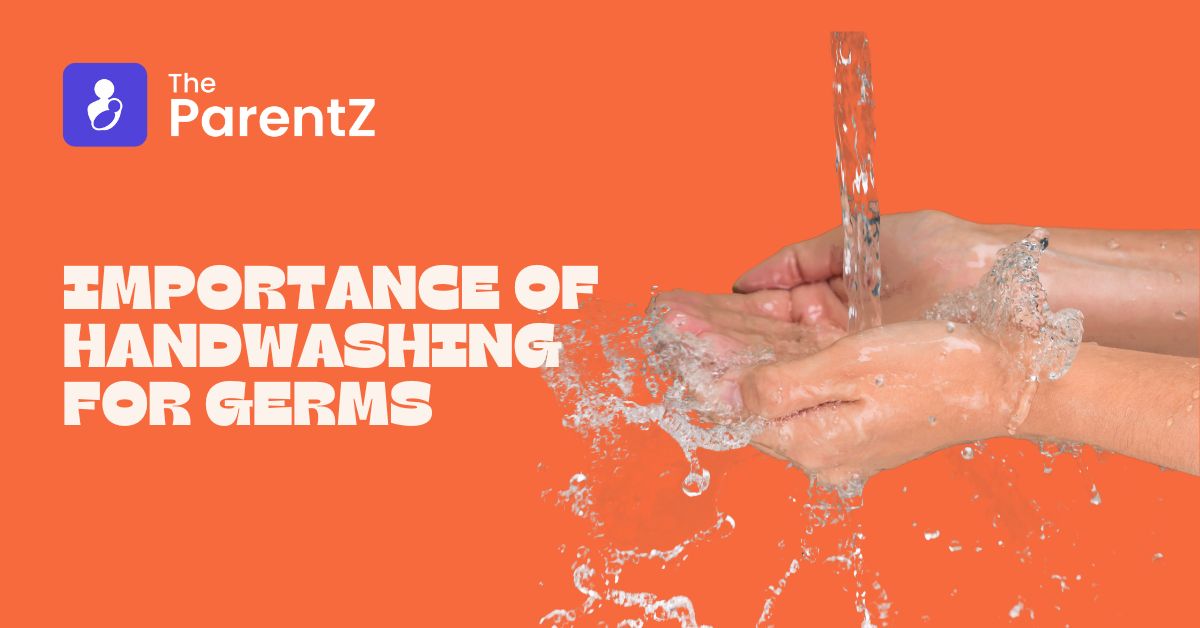Hand washing is fundamental in maintaining personal hygiene and public health;children being the most vulnerable group to infections and diseases, need to practice handwashing at all times, as this would be one of the most effective ways to protect them from harmful pathogens.
With the help of soap, water, and an effective hand washing technique, it becomes the first line of defence against the vast numbers of wet organisms that children are exposed to everyday. Achieving this goal is possible when we comprehend and follow the basic rules of hand hygiene, which will help us noticeably cut down the number of childhood illnesses and create a better health management model for kids.
The Study of Microbes
Germs, which are microorganisms that exist ubiquitously, play a role as both positive and negative factors in our environment. These can be bacteria, viruses, fungi, or protozoa and can initiate various health problems or common diseases. The children, in particular, are at higher risk because their immune system is still immature, and besides, their recreational habits bring them near people and insects that might be carriers of diseases.
The germs may get spread by one-on-one contact with an infected person, by touching objects that are contaminated, or in other cases, when the air is carrying bacteria. Through disruption of transmission of germs, hand-washing with soaps thoroughly has become a key measure in the protection of children’s health.
The Value of Hand washing
The value of hand washing, as studied and confirmed, is immense. It is one of the most important things we can do to make sure many types of infections, including those that cause diarrhea and respiratory problems, won’t spread, and especially children will not suffer from these kinds of diseases. It is worth noting the fact that handwashing with soap removes a proportion of the germs from hands, which could prevent infection since these parts of the body are frequently touched by people without knowledge, thus allowing the germs to enter the body.
Proper Hand washing Technique
The proper handwashing technique entails three steps. Consequently, the world can be saved from one million deaths each year that occur due to contaminated hands.
- This part simply entails running water on the hands using tap running water, applying soap, and combining both hands to make foam.
- This task is better done by using a cleanser to brush the back of the hands, in the space between the fingers, and by cleaning under the nails.
- There is a need to hold this process for at least 20 seconds, rinse with clean water, and dry with a clean towel.
- This method is undoubtedly the one that guarantees efficiency in cleaning germs.
Children’s Hand Washing Habits
Thoroughly vegetarian washing hands is indispensable. So, they need to be taught how to wash their hands in critical instances, like before a meal, after playing or using the toilet, after a sneeze, or after a cough. Fun and interesting handwashing can be made into an activity that children will soon make it their habit to do all the time. Identifying entertaining resources such as songs, games, or colorful soap aids in handwashing pleasure for the kids.
Challenges and Considerations
One of the things that makes this task hard inspite of its significance is that washing hands regularlyis hard to make sure about. For instance, the hurdles that might be encountered, like the absence of handwashing facilities in schools and public places, can make the practice surprisingly difficult sometimes. Also, children sometimes forget to wash their hands, or they have no idea about the importance of it. To meet these difficulties, practical methods must be applied, including making use of routines, developing reminders, and installing handwashing facilities that can adapt to the conditions of children.
The role of Parents and Teachers
Parents and teachers should be placed on the front lines of the campaign to promote good hand-washing habits. By showing kids the reason why hand hygiene is necessary, demonstrating the right handwashing techniques, and suggesting to them to do it regularly, their parents can teach them this healthy habit easily. Schools can infuse elementary and classroom activities by integrating handwashing into the curriculum and daily routines. This will give them the knowledge and the scope to put that knowledge into practice.
Conclusion
Therefore, hand washing is a simple but important measure to protect children from bad germs and anticipate the spreading of infectious diseases. Placing the emphasis on handwashing and having children acquire sufficient knowledge and skills will make an even more impactful contribution to their hygiene and health, as well as that of their surroundings.
This innate idea reveals hand washing as more elementary than just a practice of hygiene; hand washing is a fundamental element of public health, thus necessitating collectivity as well as commitment, especially in the event of protecting children. Through implementing good handwashing practices, we will be able to achieve tremendous progress regarding the health of the next generation.








Be the first one to comment on this story.